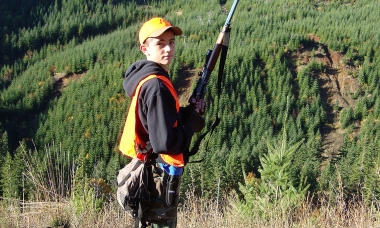
Search myodfw.com
Find maps, boundary descriptions and the percent public land for the Walla Walla Unit.

Find maps, boundary descriptions and the percent public land for the Stott Mountain Unit.

Find maps, boundary descriptions and the percent public land for the Trask Unit.
Find maps, boundary information and the percent public land in the Chetco Unit.

Find maps, boundary information and the percent public land for the White River Unit.
Find maps, boundary information and the percent public land in the Applegate Unit.
Find maps, boundary descriptions and the percent public land for the Imnaha Unit.
You don’t need a lot of gear to hunt turkey – that’s one reason for its growing popularity. However, the more you hunt – in different seasons and in different parts of the state – the more you’ll discover there are some things that can make you a more comfortable and successful hunter. Here are some essential pieces of gear beginning turkey hunters will want to consider: A face mask or camouflage face paint. Turkeys have keen eyesight so you’ll want to cover your entire face and neck with something camouflage that’s comfortable to wear. Bowhunters often prefer camo face

Find maps, boundary descriptions and the percent public land for the Warner Unit.
Find maps, boundary descriptions and percent public land for the Hood Unit.
Find maps, boundary information and the percent public land for the Maupin Unit.
Find maps, boundary descriptions and the percent public land for the McKenzie Unit.
Find maps, boundary information and the percent public land in the Ochoco unit.
Find maps, boundary descriptions and the percent public land for the Pine Creek Unit.

Find maps, boundary information and the percent public land in the Sixes Unit.
Find maps, boundary information and the percent public land in the Tioga Unit.
Find maps, boundary descriptions and the percent public land for the Wenaha Unit.
Find maps, boundary information and the percent public land in the Evans Creek Unit.
